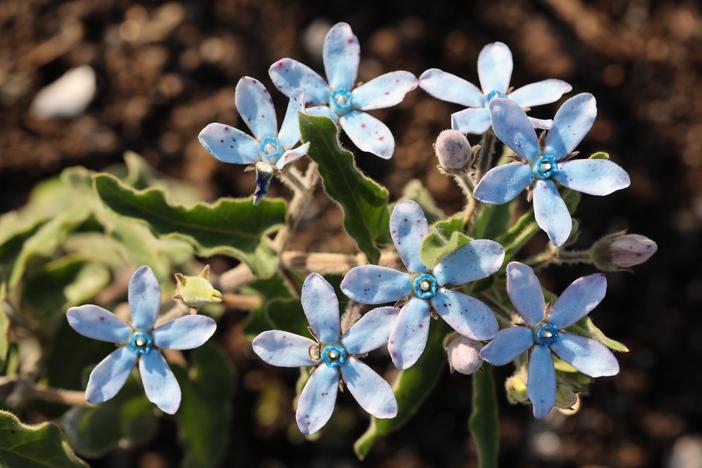Blue Flowered Milkweed
(Oxypetalum coeruleum)
Blue Flowered Milkweed (Oxypetalum coeruleum)
/
/

Cephas
CC BY-SA 4.0
Image By:
Cephas
Recorded By:
Copyright:
CC BY-SA 4.0
Copyright Notice:
Photo by: Cephas | License Type: CC BY-SA 4.0 | License URL: https://creativecommons.org/licenses/by-sa/4.0 | Uploader: Cephas | Publisher: Wikipedia Commons



















Estimated Native Range
Summary
Oxypetalum coeruleum, commonly known as Blue Flowered Milkweed, is an evergreen perennial vine or subshrub native to the grasslands and open woodlands of Southern Brazil and Uruguay. It typically grows to 100 cm (39 in) in length and features heart-shaped, gray-green, downy leaves. The plant is celebrated for its clear pale blue, star-shaped flowers that bloom in the summer, are long-lasting, and suitable for cutting. As the flowers age, they transition to a purple hue and are succeeded by distinctive 30 cm (12 in) long, boat-shaped seed pods. The seeds are equipped with downy parachute-like tufts (cypsela), aiding in their dispersal.
Blue Flowered Milkweed is valued for its striking blue flowers, which add a unique color to the garden palette. It is often used in borders, as a specimen plant, or in butterfly gardens due to its attractiveness to pollinators. This plant thrives in full sun and requires well-drained soil that is on the drier side. It is drought-tolerant once established, making it a low-maintenance option for gardeners. While propagation is typically done via seed, gardeners should note that it has a minimum temperature range of 3–5 °C (37–41 °F) and should be protected from frost or grown as an annual in colder regions.CC BY-SA 4.0
Blue Flowered Milkweed is valued for its striking blue flowers, which add a unique color to the garden palette. It is often used in borders, as a specimen plant, or in butterfly gardens due to its attractiveness to pollinators. This plant thrives in full sun and requires well-drained soil that is on the drier side. It is drought-tolerant once established, making it a low-maintenance option for gardeners. While propagation is typically done via seed, gardeners should note that it has a minimum temperature range of 3–5 °C (37–41 °F) and should be protected from frost or grown as an annual in colder regions.CC BY-SA 4.0
Plant Description
- Plant Type: Vine, Subshrub
- Height: 2-3 feet
- Width: 2-3 feet
- Growth Rate: Moderate
- Flower Color: Blue, Purple
- Flowering Season: Summer, Fall
- Leaf Retention: Evergreen
Growth Requirements
- Sun: Full Sun
- Water: Low
- Drainage: Medium
Common Uses
Bee Garden, Bird Garden, Butterfly Garden, Showy Flowers
Natural Habitat
Grasslands and open woodlands of Southern Brazil and Uruguay
Other Names
Common Names: Blue Milkweed, Milkweed, Silkpods, Southern Star, Star Flower, Tweedia, Tweedia Caerulea
Scientific Names: , Oxypetalum coeruleum, Tweedia coerulea, Amblyopetalum coeruleum, Gothofreda coerulea, Tweedia versicolor,
GBIF Accepted Name: Oxypetalum coeruleum (D.Don) Decne.